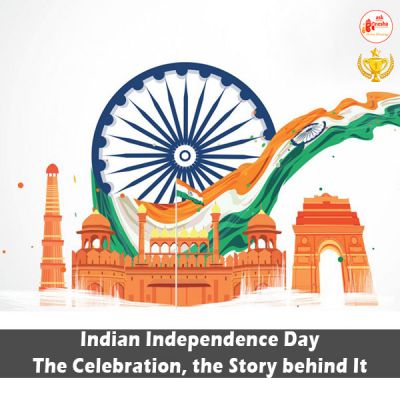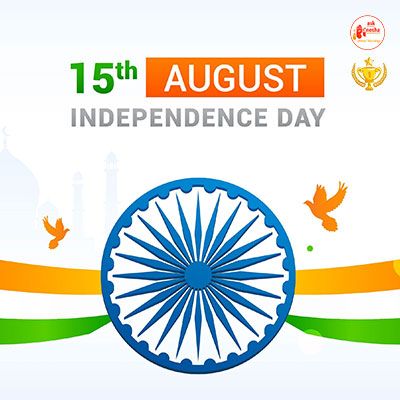Indian Independence Day is celebrated on 15th of August every year to commemorate the very day when India obtained independence from British rule in 1947. This important event in Indian history marked the end of nearly 200 years of colonial rule and the beginning of a new era for the country. On Independence Day, the Indian Prime Minister hoists the national flag at the Red Fort in New Delhi. The flag-raising occasion is accompanied by patriotic songs, speeches, and colorful cultural performances. The Prime Minister addresses to the nation highlighting the achievements of the past year and outlines the government's plans for the days to come.
Independence Day, a national holiday in India, takes place across the country. People willfully decorate their homes, offices, and public spaces with the national flag. Various cultural events, parades, and flag-hoisting ceremonies take place in schools, colleges, and various community centers. The most spectacular display of the occasion is the parade held in New Delhi. The parade showcases the diversity and unity of India through various colorful tablos, military contingents, and cultural performances of different states of India. People in great numbers attend them and enjoy them too. Live broadcast on television is also watched by millions of Indians.
Official ceremonies are not the end of the gala occasion; people celebrate Independence Day after their own will. Having been dressed up in traditional attire, people participate in cultural programs, and organize community gatherings in various places. Another popular tradition associated with Independence Day is the kite flying. The roof tops are packed with kite fliers who are highly motivated to get the better of another flier by beating them on the air. Indian tri-color in the form of kites overcast the blue sky and declares with full throated ease that this country has no match in the universe by all means.
Actually speaking, Indian Independence Day is a special day of pride and patriotism. It reminds Indians of the whole hearted sacrifices of the freedom fighters and the importance of preserving the country's hard-earned independence.
Also Read: Independence Day
How was Indian Independence Achieved?
Indian independence was achieved through a long struggle against British colonial power. The movement to snatch independence gained momentum in the late 19th and early 20th centuries. Various individuals and numerous political and apolitical organizations worked hand in hand to free India from the British clutch. Here we are going to highlight some key factors and events that led to independence of a vast country like India. The Indian National Congress, founded in 1885, had a pivotal role in the freedom struggle. Initially, the Congress wanted reforms within the colonial system that was existing. But later on it thought it rational to demand total independence.
Also Read: Independence Day Special: Are We Independent?
In 1920, with the Non-Cooperation Movement initiated by Mahtma Gandhi, urging Indian people to boycott British products, and laws a mass civil disobedience campaign was mobilized. As an obvious result millions of Indians came up with nonviolent resistance. One of the prominent ways of civil disobedience was the Salt Movement in 1930 led by Gandhi. Thousands of Indians marched for about 250 miles to the coastal town of Dandi, and stood in favor of producing salt to defend the British monopoly. This act had an impact and attracted international attention to the Independence movement of India.
In 1942, the Indian National Congress initiated Quit India Movement. It was a call for the withdrawal of British rule from India in an instant. The movement was severely repressed by the British authorities but demonstrations and determination of the Indian people in their struggle for freedom baffled everything. The impact of World War II also shattered the British Empire, and as an obvious result the Indian independence movement gained a lot of momentum. Additionally, international pressure on the British power to decolonize, along with the efforts of Indian leaders played a vital role in the granting of independence.
With the progression of the movement, the British government was bound to pass the Indian Independence Act in the year 1947. British India was divided into two separate nations: India and Pakistan so to say. Gradually it was India’s turn to gain independence on August 15th, 1947. Trailing it behind Pakistan became a separate country soon after. It's important to keep it in mind that the many names were associated with the movement for struggle for independence. There was involvement of the participation of numerous freedom fighters both known and unknown. Their collective efforts, along with the resilience and staunch determination of the Indian people, led to the end of British rule and the birth of independent India.
Who Were Behind the Independence Movement?
The Indian independence movement involved the active participation and bold leadership of numerous men, women and revolutionary organizations. Here we are going to refer some of them and organizations that played key roles in the independence movement.
Subhas Chandra Bose was a leader who had enough charisma to unite Indian people together against the British rule. He sought complete independence for India through no non-violent style but through face to face fight. He challenged the British leaders openly and to fulfill his mission he never bothered to take help of the nations who stood against the British power. He led the Indian National Army to fight against the British rulers. Bose's efforts and alliance with Japan during World War II boosted freedom struggle.
Bhagat Singh was a revolutionary who advocated for complete independence from British rule by any means. He was involved in several acts of so called terrorism against the British such as Lahore Conspiracy Case. It is Singh's sacrifice and courage that has made him an iconic figure in the freedom struggle of India. These are just a few examples to hint at. Besides these, there were many individuals, organizations, and regional leaders who were associated with the Indian independence movement. The movement was a collective effort. It involved people from all walks of life. Peasants, workers, intellectuals and revolutionaries all were united in their quest for freedom catching hold of each other’s hands.
Not only these two, There were many freedom fighters who risked their lives to liberate India. People Like; Sardar Udham Singh, Gopal Krishna Gokhale, Chandra Shekhar Azad, Dadabhai Naoroji, Bipin Chandra Pal, Lala Lajpat Rai, Ram Prasad Bismil and many more were the real Freedon Fighters and reason behind India got the Freedom from the Britishers.
When Indian Independence was First Observed?
Indians won Independence on August 15, 1947. This was the very day when India officially gained independence from the British dominance after nearly two centuries of colonial rule. The Indian Independence Act, passed by the British Parliament, was enforced on the particular day when India got Independence. The British parliament granted independence to India and partitioned it into two separate nations. One was India and the other was Pakistan.
It was August 15, 1947, when India’s first Prime Minister Jawaharlal Nehru, hoisted the Indian national flag with utmost confidence. The ceremony was held at the Red Fort in New Delhi. This act marked the official declaration of India's independence in a broad sense. Since then, August 15th has been celebrated every year as Indian Independence Day. This particular holy day is observed in every corner of India and abroad where Indians dwell to commemorate the historic event.
Is There Anything Astrological Behind the Date?
Actually there is no astrological matter related to India’s winning the Independence after being ruled by the British for decades. No astrological significance is specifically tied to the particular date of Indian Independence Day, which is August 15th. It is known from data and papers that the date was chosen for political and historical reasons rather than astrological considerations.
The decision to celebrate Indian Independence Day on 15th August 1947 was made by none other than the Indian National Congress and other leaders who were whole heartedly involved in the independence movement. The date was selected so that there is coinciding of the matter with the transfer of ruling power from the British to the Indians as defined by the Indian Independence Act that was passed by the British Parliament.
It's important to highlight that astrological belief and considerations may be responsible for significance for some Indian individuals or cultural practices. But so far it is known, the option of August 15 for the very Indian Independence Day was not based on astrological factors. There was something more that can never weighed in a simple manner. Enough sweat, blood and will power are mingled together to snatch the much craved Indian Independence Day from the grasp of the power hungry colonial rulers.
For Interesting Astrology Videos & Posts, follow us on Instagram
























 Translate
Translate